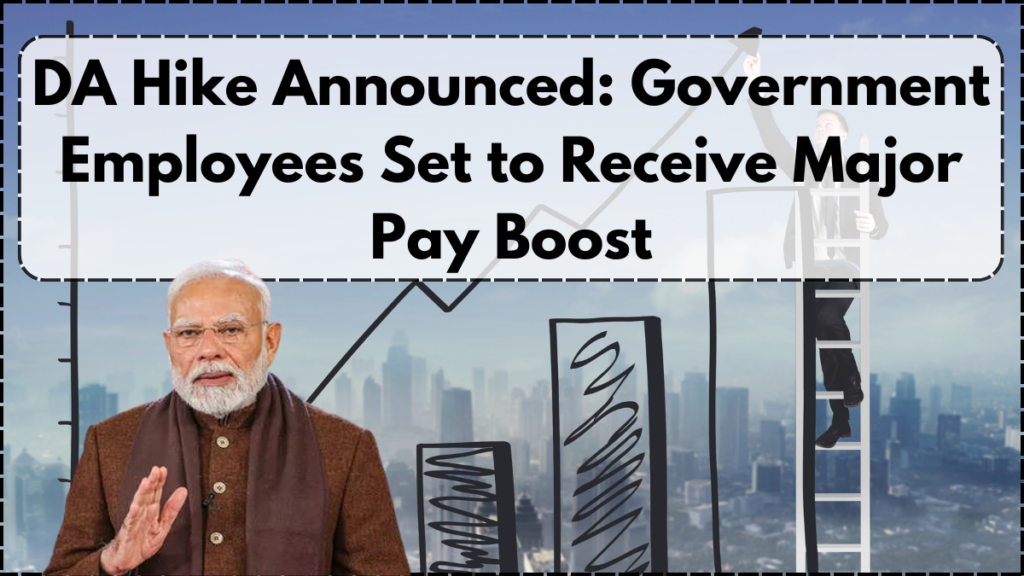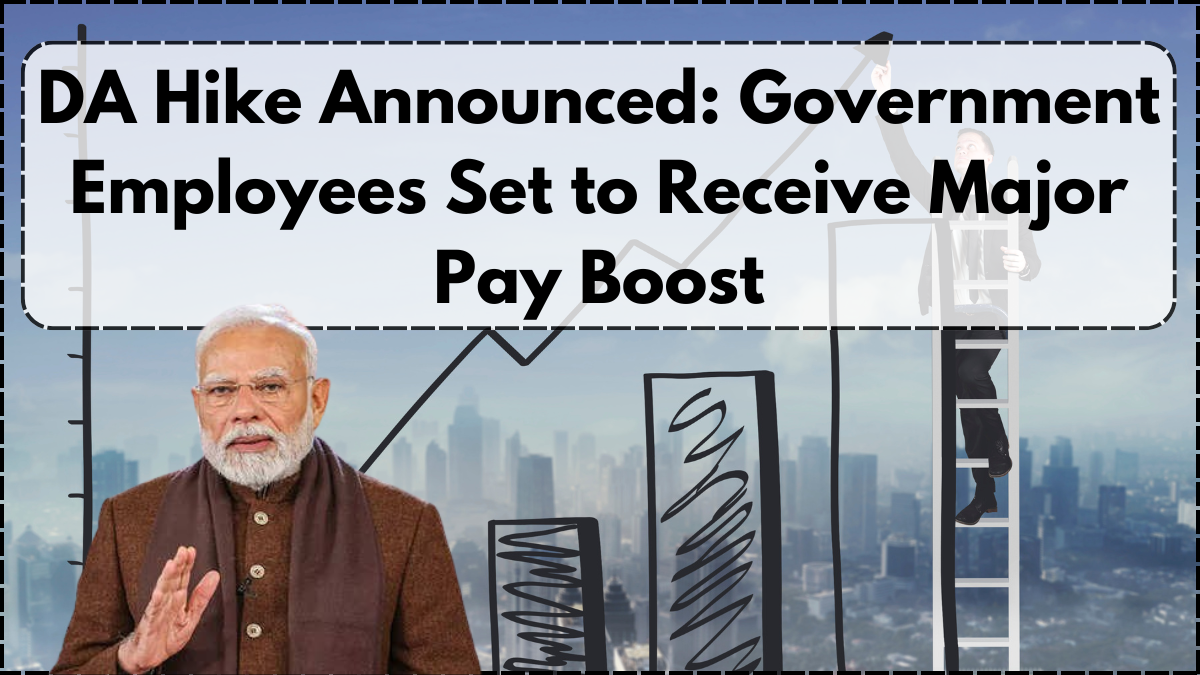The central government has provided a significant boost to its employees and pensioners by approving a 2% increase in the Dearness Allowance (DA) under the 7th Finance Commission. This decision, which is expected to alleviate the financial burden on government personnel, will raise their monthly incomes and pension payments. Let’s break down the details of this change and what it means for government employees and pensioners.

How the New DA Impacts Government Employees and Pensioners
As of January 1, 2025, the new DA has come into effect. This means government employees and pensioners will begin receiving their arrears for the months of January, February, and March as part of this increase. In total, the DA hike will benefit approximately 48.66 lakh serving government employees and 66.55 lakh pensioners across the country. With this revision, the dearness allowance has been raised from 53% to 55% of the basic salary, a substantial relief for individuals dependent on fixed government incomes.
Additionally, this adjustment in DA will also result in a higher financial burden for the government, with the new Dearness Allowance and Dearness Relief (DR) policies collectively adding an extra Rs 6,614.04 crore to the annual expenditure of the government treasury.
Breakdown of the Salary Increase After the DA Hike
The Dearness Allowance is calculated as a percentage of the basic salary, so the salary increase varies depending on the employee’s base pay. Here’s an example to help you understand how the hike will directly impact the income of government employees.
For instance, if an employee’s basic salary is Rs 20,000, the previous DA of 53% would result in a monthly allowance of Rs 10,600. With the new DA rate of 55%, the employee will now receive Rs 11,000 as their DA, resulting in an increase of Rs 400 per month.
Similarly, for an employee earning a basic salary of Rs 50,000, the previous DA of 53% would translate to Rs 26,500. With the new increase to 55%, their DA will rise to Rs 27,500, leading to an extra Rs 1,000 in their monthly salary.
Frequency of DA Increases: When Can Employees Expect More Adjustments?
It is important to note that the Dearness Allowance is typically revised twice each year. The first revision takes place in January, and the second one happens in July. Historically, the DA was increased by 3% in July 2024, raising it from 50% to 53%. This practice of semi-annual revisions ensures that government employees’ salaries and pensions keep pace with inflation and rising living costs.
The Financial Implications of the DA Increase
While the increase in DA provides much-needed relief to government employees and pensioners, it also comes at a considerable financial cost to the government. The total additional expenditure is projected to be around Rs 6,614.04 crore annually. This cost reflects the combined impact on both employees’ and pensioners’ DA and DR payments, highlighting the significant financial commitments the government undertakes to support its workforce.
The government’s decision to approve this hike reflects its ongoing efforts to keep pace with inflation and the rising cost of living, helping employees maintain their purchasing power. However, it also places additional strain on the national budget, requiring the government to balance employee welfare with fiscal responsibility.
Table: Example of Salary Increase After DA Hike
| Basic Salary (Rs) | Previous DA (53%) (Rs) | New DA (55%) (Rs) | Increase in DA (Rs) |
|---|---|---|---|
| 20,000 | 10,600 | 11,000 | 400 |
| 50,000 | 26,500 | 27,500 | 1,000 |
| 30,000 | 15,900 | 16,500 | 600 |
| 60,000 | 31,800 | 33,000 | 1,200 |
Conclusion: DA Hike Brings Relief to Employees and Pensioners
The 2% increase in Dearness Allowance is undoubtedly a positive development for government employees and pensioners, particularly as it addresses the ever-growing cost of living. While the hike will provide much-needed financial support, it also brings with it substantial costs for the government. The government will continue to monitor inflation and the financial burden of these allowances, making adjustments as needed to ensure that employees are protected from the rising costs of everyday life.
This DA hike reflects the government’s commitment to supporting its workforce while balancing fiscal responsibility. As the new year progresses, employees can expect the continued evolution of these benefits, ensuring that their salaries remain competitive and aligned with economic realities.
Frequently Asked Questions (FAQ)
How does the DA increase affect government pensioners?
The 2% DA hike will also apply to pensioners, increasing their monthly pension payouts. This change will benefit approximately 66.55 lakh pensioners across the country.
Will I receive DA arrears for January, February, and March 2025?
Yes, government employees and pensioners will receive arrears for these three months, reflecting the 2% increase in DA from January 1, 2025.
How often is the DA revised for government employees?
The DA is revised twice a year—once in January and again in July. The January revision is based on inflation data and other economic factors, while the July increase typically adjusts for further inflation.
What is the total additional cost of the DA hike for the government?
The new DA and DR adjustments are expected to add an extra Rs 6,614.04 crore annually to the government’s expenditure.
Will the DA increase impact all government employees equally?
The DA increase will affect all government employees, but the actual amount of the increase depends on the employee’s basic salary. Those with higher salaries will see a larger increase in their DA.
For More Information Click Here
Pari is a passionate writer known for captivating stories that blend imagination and reality. Inspired by travel, history, and everyday moments, Pari crafts narratives that resonate deeply with readers.




